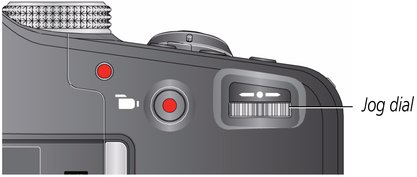KODAK EASYSHARE MAX Camera / Z990 — User guide
Table of Contents > Using different modes > P, A, S, and M modes
1 Using different modes
P, A, S, and M modes
Use PASM modes for more control over your camera and pictures.

Changing P, A, S, or M mode settings
-
Turn the Mode dial to P, A, S, or M.
-
Press the Display button
 .
. -
Turn the Jog dial
 to choose a setting, then press it to edit the setting. Turn the Jog dial
to choose a setting, then press it to edit the setting. Turn the Jog dial  to change a setting, then press it to save it.
to change a setting, then press it to save it.

|
ISO - adjust the camera's sensitivity to light. Higher ISO indicates greater sensitivity. Flash Compensation - adjust flash brightness. Exposure Compensation - adjust the exposure. If the scene is too light, decrease the setting; if it's too dark, increase it. Shutter speed - control how long the shutter stays open. (Use a tripod for slow shutter speeds.) Aperture - (also known as f-stop) control the size of the lens opening, which determines the depth of field.
|
|
See the Extended user guide |
|
|
See How-To videos |
Previous Next



